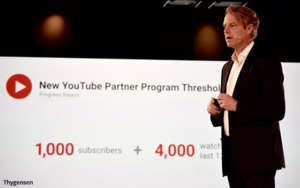
Last week in Miami, the 4A’s launched a new vision at its annual conference, Accelerate. To move the ad industry forward, the 4A’s will focus on creativity, commerce, and culture. The vision recognizes a need to reinvent client-agency partnerships in today’s world, where virtually all economic models are being disrupted by massive transformation. The most popular topics of the conference were creativity, technology, diversity, and brand safety.
New Client and Agency Models
Marc Pritchard, Chief Brand Officer at P&G, Debby Reiner, CEO at Grey NY, and Arthur Sadoun, Chairman/CEO at Publicis, discussed the need for reinvention of the agency and client relationship, since most are no longer exclusive. There was broad agreement on the importance of value-based, transparent relationships that stress more seamless creativity, and account management that is accessible and efficient. This approach is born of the need for fast action, which requires all partners to have clearly identified decision-makers, and one-stop agency shops.
The agency/client/brand-building model of the future will continue to place increased emphasis on technology. P&G is taking more control of data and technology and pushing brand managers to be more entrepreneurial. Its ideal model is creatives and data scientists working alongside the brand manager. P&G will continue to examine ways to cut expenses and reduce agency fees, which includes production costs, but will only take in-house areas where they can create more value such as digital media planning.
https://twitter.com/keesha_kjb/status/983336820380495873
How Culture and Commerce are Merging
Jeff Fromm, Partner at Barkley and author of Marketing to Gen Z, shared how today’s consumer culture and technology have impacted brand strategy. He noted the heavy influence of the smartphone, calling it the modern day Swiss Army Knife and a trusted tool. Fromm shared four tenets to help companies thrive in today’s marketplace:
- Remarkable experiences are amplified, and storytelling is replaced by story living
- Brand behavior is the new brand positioning by offering proof
- Embrace a culture of content
- Modern consumers crave information, so focus on content, relationships, and loyalty
- Innovation is an expectation
- Core and emerging business strategies must sustain innovation
- Replace the golden rule with the platinum rule, where you treat customers as they want to be treated
- To be successful, businesses must engage employees first, and it starts with the CEO
Building A Better Advertising Ecosystem

Allan Thygesen, President Americas at Google, shared his philosophy that today every product is high consideration, because consumers have heightened expectations for every experience.
Google has named it the age of assistance, where brands must be more assistive to consumers throughout the brand journey. This requires advertising to work for everyone in an age of brand safety issues, and an ad environment that is many times too opaque and complex. To combat these issues, the industry must focus on transparency, trustworthiness, and value. In response, Google has implemented a three-pronged approach:
- Brand-appropriate environments
- Trusted measurement standards
- Powerful ad solutions
Google believes better measurement drives growth, and marketing mix modeling provides more actionable data. Attribution research is critical to help marketers understand which marketing touchpoints actually lead to sales.
The Enlightened Workplace
Natasha Bowman, President and Founder of Performance ReNEW; Glenn Singleton, Founder & President at Courageous Conversation by PEG; and Barbara Tint, Consultant and Professor, Portland State University, discussed the importance of diversity and inclusiveness in today’s work environments. The dynamics of social groups and the presence of power, status, and privilege can interrupt an equitable work culture. To establish and maintain equity, they recommended ongoing conditions and solutions reviews to ensure accountability across all levels of organizations. A focus on the values of consistency, civility, and accountability will ensure success for most organizations.
The panel shared a Google study on the dynamics that set apart successful teams:
- Psychological safety: Can team members take risks without feeling insecure or embarrassed?
- Dependability: Can the team count on each other to do high-quality work on time?
- Structure and clarity: Are goals, roles, and execution plans on the team clear?
- Meaning of work: Is the team working on something that is personally important for each of them?
- Impact of work: Does the team fundamentally believe that the work they’re doing matters?
Singleton encouraged employers to have courageous conversations about race in the workplace. He referenced the recurring issues of racism in the US that have led to very few people of color in positions of power.
Artificial Intelligence and the Need for Humans
Louis Rosenberg, CEO & Founder of Unanimous AI, shared the “swarm AI” concept, which pairs humans with artificial intelligence. Swarm AI is modeled after many organisms that amplify their group intelligence by forming flocks, schools, shoals, colonies, and swarms. Across countless species, nature shows us that social creatures, when working together as unified systems, can outperform the vast majority of individual members when solving problems and making decisions.
Swarm AI keeps humans in the loop, amplifying not just human intelligence, but also human values, morals, creativity, and sensibilities, which are powered by 100 trillion connections in the human brain. Most importantly, its work has demonstrated swarm AI leads to optimal results.
Business applications of swarm AI include:
- Consumer intelligence (optimized insights) – market intelligence, product planning, advertising and messaging.
- Business intelligence (amplified intelligence) – vast amount of knowledge in organizations such as sales teams.
Rosenberg shared a swarm AI example in which a panel of consumers was asked what feature will drive adoption of autonomous vehicles. Their swarm AI answer was “time to do other things.”
Brand Safety and Privacy
With technology providing numerous options for consumer access to content, the 4A’s launched an initiative to safeguard consumers and the brands to ensure balanced environments where both can coexist with trust. The 4A’s announced the formation of the Advertising Protection Bureau comprised of members from Dentsu Aegis Network, GroupM, Havas Media, Horizon Media, IPG Mediabrands, MDC Partners, Omnicom Media Group, and Publicis Media. Other 4A’s brand safety initiatives will include development of a risk management module and a code of decency.
In response to growing concerns over privacy, such as the Facebook crisis over Cambridge Analytica’s access to users’ data, most technology firms have preparations underway to comply with the European consent-based model for data privacy known as GDPR (General Data Protection Regulation), because they see adoption of similar policies in the US as inevitable.
Strategies to Accelerate Growth in Today’s Increasingly Digital, Social & Mobile World
Marsha Lindsay, Chair and Chief Strategist at Lindsay, Stone & Briggs, discussed the many challenges facing marketers today: diminished budgets, the proliferation and fragmentation of marketing channels, lack of transparency, fake data, and shaken trust. All of these factors have led to a net decline in marketing effectiveness according to researcher Les Binet.
Lindsay examined the data from a wide variety of recent research reports and developed these summary conclusions:
- The concept of the unique selling proposition (USP) was never true to begin with or is no longer applicable. Human preference develops in the subconscious, so rational USPs don’t persuade in the ways previously assumed. Consumers are attracted by what’s most distinctive and emotionally relevant.
- Sales activation (promotion) by rational incentive combined with awareness of emotional relevance (brand building) drives maximum growth. Researchers Binet and Field found the optimum campaign mix to be sales activation at approximately 40 percent of budget and brand building awareness of emotional benefit and value at 60 percent of budget.
- Value is not a price, feature or rational benefit, but instead how you help people be more of who they are or aspire to be. Evoking emotional relevance drives perceptions of value, desensitizes consumer to price, and dramatically affects large business results. Research reveals that activation (sales promotion) marketing efforts produced a 1 percent increase in unit volume and a 3.33 percent increase in profits, while those focused on improving perceptions (brand building) also produced a 1 percent increase in unit volume, but a much improved 11.1 percent increase in profits.
- Target broadly, even occasional users. Broad reach can be achieved through advertising, publicity, social and strategic amplification. Media mix matters, and research shows using more media channels improves ROI.
- What works in mobile, social, digital? Truly original messaging, and multi-media messaging of three to five channels.
- All marketers must be prepared to connect brands directly to consumers. Barriers to marketplace entry have collapsed, there’s been a huge rise in consumer-direct brands, and two-thirds of consumers expect directly connectivity to brands.
Published: April 16, 2018